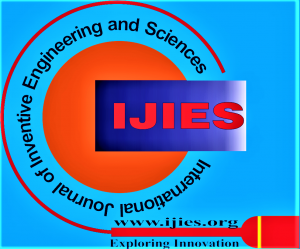![]()
Monitoring of Livestock on Large-Scale Areas using Aerospace Data and IoT Technologies
Nishanov. A.X.1, Babadjanov. E.S.2, Faizullayeva. M.A.3, Serjanova. D.S.4, Toliev. Kh. I.5
1Akhram Khasanovich Nishanov, Professor, Department of System and Applied Programming, Tashkent University of Information Technologies named after Muhammad al-Khwarizmi, Tashkent.
2Elmurod Satimbaevich Babadjanov, Professor, Department of Information Technologies, Nukus State Technical University, Tashkent.
3Manzura Azimjanovna Faizullayeva, Student, Department of System and Applied Programming, Tashkent University of Information Technologies named after Muhammad al-Khwarizmi, Tashkent.
4Dilbar Saatbaevna Serjanova, Student, Department of System and Applied Programming, Tashkent University of Information Technologies named after Muhammad al-Khwarizmi, Tashkent.
5Khurshid Ilhamovich Toliev, Student, Department of Systems and Applied Programming, Tashkent University of Information Technologies, named after Muhammad al-Khwarizmi, Tashkent.
Manuscript received on 26 July 2025 | First Revised Manuscript received on 30 July 2025 | Second Revised Manuscript received on 05 August 2025 | Manuscript Accepted on 15 August 2025 | Manuscript published on 30 August 2025 | PP: 1-9 | Volume-12 Issue-8, August 2025 | Retrieval Number: 100.1/ijies.H111412080825 | DOI: 10.35940/ijies.H1114.12080825
Open Access | Editorial and Publishing Policies | Cite | Zenodo | OJS | Indexing and Abstracting
© The Authors. Blue Eyes Intelligence Engineering and Sciences Publication (BEIESP). This is an open access article under the CC-BY-NC-ND license (http://creativecommons.org/licenses/by-nc-nd/4.0/)
Abstract: This article explores innovative solutions for developing a remote-control system to monitor cattle in vast, remote areas that are inaccessible to humans. The system, utilizing Internet of Things and geofencing technologies, enables farmers to reduce manual labor, track lost livestock, and effectively utilize pasture resources. Advanced technologies, including GPS, ultrasonic sensors, databases, antennas, and Arduino microcontrollers, were utilised in this system. Additionally, methods for assessing vegetation cover in pastures and their nutritional productivity using vegetation indices, such as NDVI, were also analysed. The research results show that the proposed solution enables increased efficiency in livestock management, as well as optimisation of energy and time costs. This, along with creating conveniences for farmers, will serve to improve the health and productivity of livestock.
Keywords: Monitoring, Geofencing, IoT, GPS, NDVI, Farming System, Productivity, Satellite, Aerospace Data.
Scope of the Article: Internet of Things (IoT)
